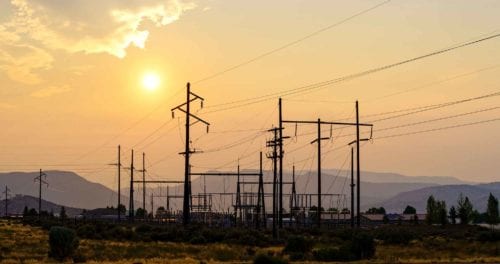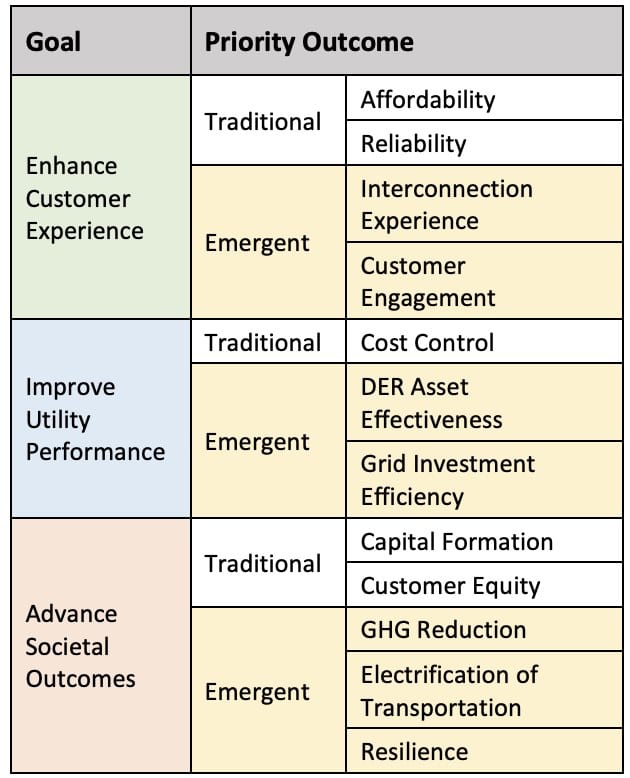
Performance-Based Regulation: Getting Down to Business Model Reform in Colorado
This Spring, Colorado ascended to the top tier of state-led clean energy policy in the United States. In the final days of May, Governor Jared Polis signed 11 bills ushering in a wave of key policy changes to advance decarbonization and clean energy in the state. The legislature codified an electricity sector greenhouse gas (GHG) emissions reduction goal of 100 percent by 2050 and enacted an economy-wide emissions reduction goal of 90 percent below 2005 levels by 2040. While these measures provide direction and ambition, other measures—including those related to electric vehicle (EV) deployment, utility regulation, distributed energy resources, and aging coal plants—address key details of how the state will meet these goals.
One practical result of Colorado’s 2019 legislative feats is that state agencies and Colorado’s energy stakeholder community have a lot of work ahead of them—perhaps none more than the Public Utilities Commission (PUC). Lawmakers have directed the PUC to enact new rules for utility distribution system planning, create regulations on including the cost of CO2 emissions in utility electric resource plans, and evaluate the merits of Colorado joining a regional power market.
Importantly, the legislature also recognized that updated utility regulation will be needed for the state to achieve its goals cost-effectively. Accordingly, Section 11 of S.B. 236 directed the PUC to investigate whether transitioning to a performance-based regulation (PBR) model based on performance metrics and financial incentives would be “net beneficial” to the state. The legislature requires the Commission to examine how PBR can align utility operations, expenditures, and investments with at least five policy goals: safety, reliability, cost-efficiency, emissions reductions, and DER expansion. The legislature has directed the PUC to submit its report to relevant committees by November 2020. Fortunately, experience with PBR elsewhere and new best practices for process approaches to regulatory investigations are available to inform how Colorado undertakes this work.
Aligning on Scope and Scenarios Is Key for the PBR Investigation
At the outset, it is important to clarify questions around the scope and methods of analysis, how stakeholders will participate, and what form the outputs of the investigation will take. The legislature has highlighted six issues that the PUC must address: (1) whether a transition to PBR would be “net beneficial” in terms of meeting state goals; (2) specific actions the PUC might take to guide the transition; (3) a list of potential utility directives related to a performance-oriented transition; (4) potential proceedings in which recommendations from the PUC’s report could be implemented; (5) a proposed timeline for the transition; and (6) whether any statutory changes are needed.
These are issues that are inherently hard to answer. It may be particularly challenging to structure a meaningful analysis of the expected net benefits of a future that remains highly uncertain. Indeed, this likely requires thoughtful contemplation of possible scenarios for the utility business, including a “do-nothing” scenario. Evaluating the opportunity in a manner that meaningfully informs future policy or regulatory action, as well as utility modernization, requires an approach that combines collaboration, creativity, expert input, and analytic rigor.
While there is no ready playbook for such an analysis, one notable example from Hawaii deserves attention. Earlier this year, the Hawaii State Energy Office released the results of a two-year study of utility business models and regulatory reforms which—among a broad set of findings—concluded that a PBR-based approach in the state could result in lower residential rates, on average, between 2018 and 2045 relative to the status quo. While Colorado will need to develop its own method for assessing net benefits of PBR reforms, the Hawaii study offers one approach for doing so.
Process Approach and Design Are Also Critical for Success
In our experience, how the Commission conducts its investigation may be as important as what is evaluated. Fortunately, some emerging examples and approaches from peer states suggest important ingredients for conducting a successful process.
Leadership is one key component of a successful process and, since the legislature’s directive lands on the Commissioners’ desks, will necessarily start with the PUC. In particular, the PUC and its staff can play a main role in coordination, synthesis, and communication throughout the investigation. But other stakeholders can and should demonstrate leadership as well. In Minnesota’s performance metrics docket, for example, the PUC ultimately adopted the Office of the Attorney General’s proposed conceptual framework for PBR as a tool to guide the discussion and develop metrics. That type of solution-oriented approach by a third party is valuable to all parties involved.
Similarly, a clear objective statement for what the process seeks to achieve and what outcomes it should generate is crucial. In Colorado’s case, the forthcoming investigatory docket offers an opportunity to clarify how current trends are impacting utilities, customers, and the grid. Collaboration toward a common understanding of these trends via a well-designed stakeholder process can help ensure that parties are on the same page and generate a shared understanding of the public benefit goals that the legislature has prioritized in S.B. 236. Facilitated workshops, feedback sessions, and technical conferences can enhance the stakeholder community’s capability to develop solutions and produce new working relationships among parties.
This approach has been on display in Hawaii’s current PBR investigation (a process independent of the two-year study mentioned above), where RMI serves as technical advisor to the PUC and process facilitator with parties. There, the PUC’s Phase One decision advanced a new performance-based framework for utility regulation informed by three regulatory goals and twelve priority outcomes to guide further development of PBR reforms (see table). The Commission also adopted three principles to help guide the reform process: a customer-centric approach, administrative efficiency, and maintaining the utility’s financial integrity. In Phase Two of this process, now underway, the Hawaii PUC and parties are focused on design and implementation of mechanisms to achieve those outcomes. While such implementation details are beyond the scope of Colorado’s immediate work, this process offers a view of where the Colorado commission’s investigation could lead.
Figure: Hawaii PUC’s Goals + Outcomes PBR Framework
Source: Hawaii Public Utilities Commission Decision & Order No. 36236, May 23, 2019
Other state efforts offer helpful lessons for Colorado’s investigation as well. Oregon’s 2018 investigation pursuant to S.B. 978, for example, examined how developing industry trends, technologies, and policies were impacting the existing electricity system, and asked whether changes were needed to meet today’s societal objectives. Discussions coalesced around four areas for deeper investigation: customer choice, economic efficiency, access, and a low-carbon future. The Oregon Commission encouraged working groups to dive deeper into these topics outside of monthly meetings, which helped enhance stakeholders’ understanding of key tensions and opportunities in each area. This process culminated in a PUC-authored report summarizing key issues and recommended next steps.
The Colorado process necessarily begins at a different stage than the investigations pursued in other states. Indeed, as noted above, lawmakers have already identified five public benefit goals that the PUC should focus on, while the Governor’s office has outlined a broader strategy in its Roadmap for 100% Renewable Energy by 2040. With these goals in mind, it now falls to the Commission and stakeholders to define what the future can look like, how different priorities interact with each other, and what these dynamics mean for an updated utility regulatory framework.
Getting Down to Work, Together
No doubt, the work ahead for the Colorado energy community is substantial. The PBR investigation offers a foundational step toward modernized utility regulations, but other issues teed up by the legislature require commensurate focus and effort. Fortunately, Colorado is blessed with a tremendous community of energy system leaders, entrepreneurs, and expertise. Our time has come to flex those muscles and get down to business as we move from policy to implementation.
